Outdoor Lighting
Outdoor lights are different because they have to withstand the weather. They must have a minimum rating of IP23 to withstand the ingress of rainwater. The higher the number, the greater the protection. They also feature a hard-wearing finish to withstand fading and damage from wind and rain.
Stunning effects can be achieved with outdoor lighting in a variety of ways and with some thought and careful consideration. A patio or deck area can be transformed by adding decking or walkover lights to create a wonderful atmosphere, and front doors need a light nearby.
Outdoor Lighting & Garden Lights
The garden and other outside areas can be highlighted using path lights or spotlights to pick out features or plants. LED lighting works well and enhances areas of your garden, and using motion sensors to increase the security of your outdoor space is an ideal solution.
Integrated LED lighting is not fitted with a bulb. It is fitted with integral LED’s, usually but not always an LED module. This is a small circuit board with the LED’s attached and can be replaced in some cases. If it cannot be replaced, the fitting must be properly disposed of at the end of its life. Integral LED lights have a lifetime of around 25,000 hrs – 35,000 hrs.
Outside lights can be fitted to a wall for safety and security. They are perfectly safe provided you follow some basic steps. All fittings must be suitably IP rated for its function. For example, submersible pond lights are IP68 rated whilst a garden lamp post should be a minimum of IP44 rated, so choosing the correct lights for the application is important.
Electrical installations should only be undertaken by a qualified electrician. DIY electrics are a potential source of injury or worse in gardens where the installation is at the mercy of the elements. In England, you need your electrician to provide a Part P certificate to comply with building regulations. Solar-powered lights are now a realistic alternative in many cases and do not need to be wired in.
Garden Lighting Design
Remember that the fitting itself is only a means to an end – providing a weatherproof or waterproof housing which will contain the right lamp in the right position to do its job, and protect it against impact and the elements. So, choosing the right type of fitting comes next. That is the stage at which you can choose whatever suits your taste and the requirement to blend with plants or materials.
There are plenty of outdoor lights available that won’t rust and in all styles. Those constructed from composite materials are available in a variety of finishes. They will not corrode and weather very well in a coastal location. Those constructed from polymers are usually black or white and will last for a very long time, even right next to the sea. Solid brass and copper lights are available. They will not corrode, but tend to be more expensive than those made from composite materials or polymers.
Outside Lights and Function
First, you need to define your needs by function. Most exterior house lights are predominantly decorative and are used to highlight features such as trees, shrubs, water features and so on. You may also need to consider illuminating paths and steps for safety or aesthetic reasons and to guide visitors to your front door.
Outdoor wall lights for general illumination and security around the house, patio lighting for alfresco dining and to enable you to see what you are cooking at the barbecue and so on. This will also help you to define what you may want to connect to separate switches or circuits.
We always recommend LED light bulbs for use in outdoor lighting. They tend to be left on for long periods of time, so energy efficiency and long life is important. As a general rule of thumb, use a 6w LED bulb where you would use a 60w bulb and 10w LED where you would use 100w. Please note that some cheap generic LED bulbs are not suitable for use outdoors, so make sure you check before buying them.
Positioning Your External Lighting
Good external lighting depends upon correct positioning and selecting the correct type of fitting for the effect you are trying to achieve. You should consider type, material, wattage, light coverage and beam angle. They should be hidden or camouflaged to blend in with the surrounding garden and plants wherever possible. If you are making a design statement, then they should be more prominent and visible. For example, step lighting, patio walkover and deck lighting.
Remember, creative garden lighting is about effects. A stunning evening and nighttime garden can be achieved with some thought and careful consideration.
For further inspiration and information, please have a look at our Complete guide to lighting up outdoor spaces and selecting and looking after your outdoor lighting guides.
Outdoor Lighting FAQ’s
Q) How are outdoor lights different to other lights?
A) Outdoor lights are different because they have to withstand the weather. They must have a minimum rating of IP23 to withstand the ingress of rainwater. The higher the number, the greater the protection. They also feature a hard-wearing finish to withstand fading and damage from wind and rain.
Q) Can outdoor lighting be used indoors?
A) Yes, outdoor lighting can be used indoors and anywhere else in your home, including bathrooms. Outdoor lights rated IP65 or higher can also be used in wet rooms.
Q) I live on the coast, which lights won’t rust?
A) There are plenty of outdoor lights available that won’t rust and in all styles. Those constructed from composite materials will not corrode and weather very well in a coastal location. Those constructed from polymers are usually black or white and will last for a very long time, even right next to the sea. Solid brass and copper lights are available. They will not corrode, but tend to be more expensive than those made from composite materials or polymers.
Q) Which light bulb is best for outdoor lights?
A) We always recommend LED light bulbs for use in outdoor lighting. They tend to be left on for long periods of time, so energy efficiency and long life is important. As a general rule of thumb, use a 6w LED bulb where you would use a 60w bulb and 10w LED where you would use 100w. Please note that some cheap generic LED bulbs are not suitable for use outdoors, so make sure you check before buying them.
Q) What is integrated led outdoor lighting?
A) Integrated LED lighting simply means that the light is not fitted with a bulb. It is fitted with integral LED’s, usually but not always an LED module. This is a small circuit board with the LED’s attached and can be replaced in some cases. If it cannot be replaced, the fitting must be properly disposed of at the end of its life. Integral LED lights have a lifetime of around 25,000 hrs – 35,000 hrs.
-

-
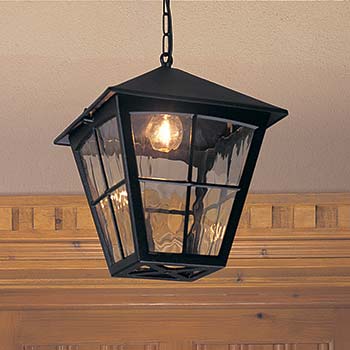
Outdoor Porch Lights
-
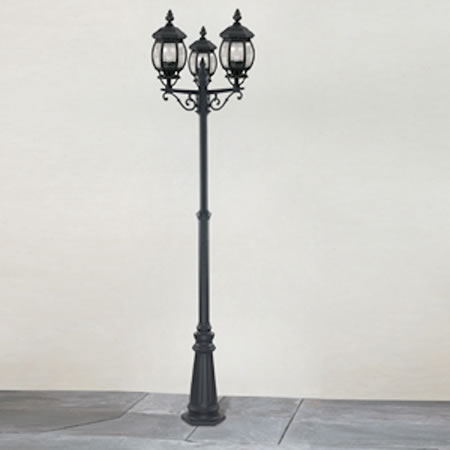
Garden Lamp Posts
-

Brass And Copper Garden Lights
-

Traditional Outdoor Wall Lights
-
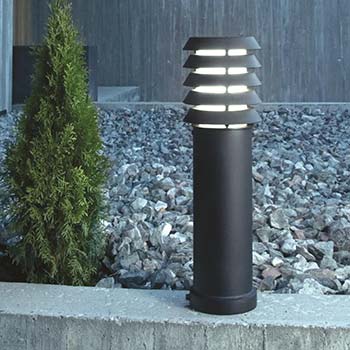
Post Lights - Bollard Lights
-
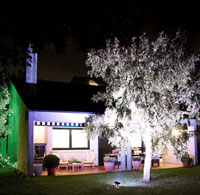
LED Garden Lights
-
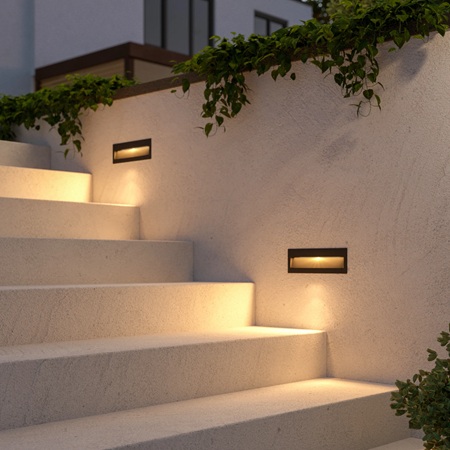
Brick Lights
-

Decking Lights
-

Lawn Lights - Patio Lights
-
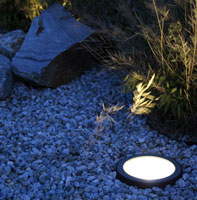
Walk Over & Drive Over Lights
-
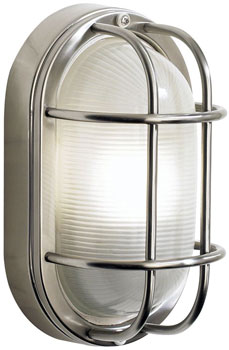
Bulkhead Lights
-

Garden Spike Lights
-
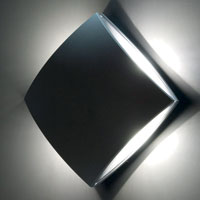
Modern Outdoor Wall Lights
-

Period Outdoor Lighting - Brass
-
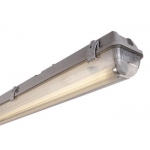
Garage Lighting
-
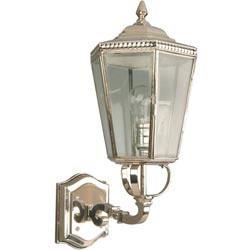
Period Outdoor Lighting - Nickel
-
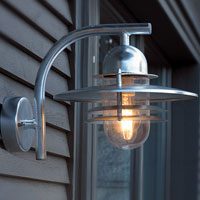
Art Deco Outdoor Lighting
-
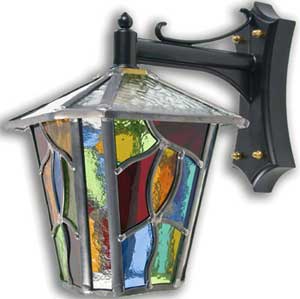
Leaded Outdoor Lanterns
-

Security Lights
